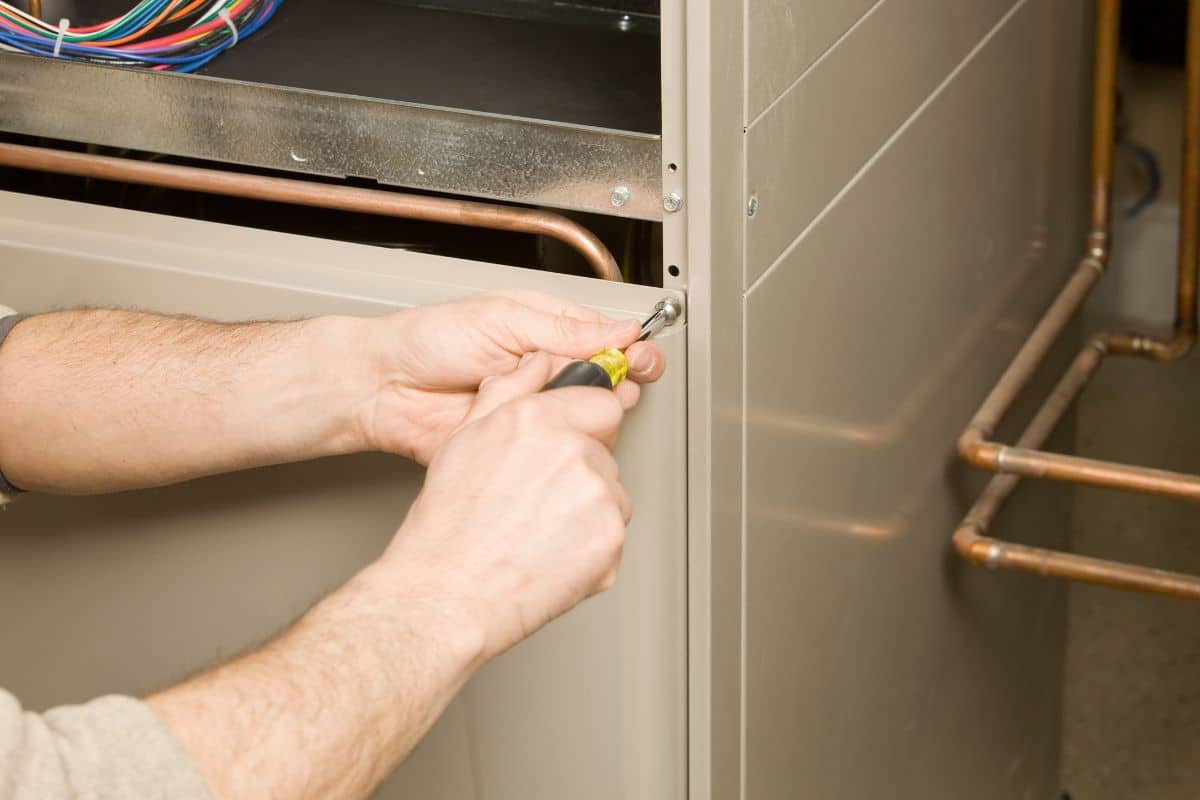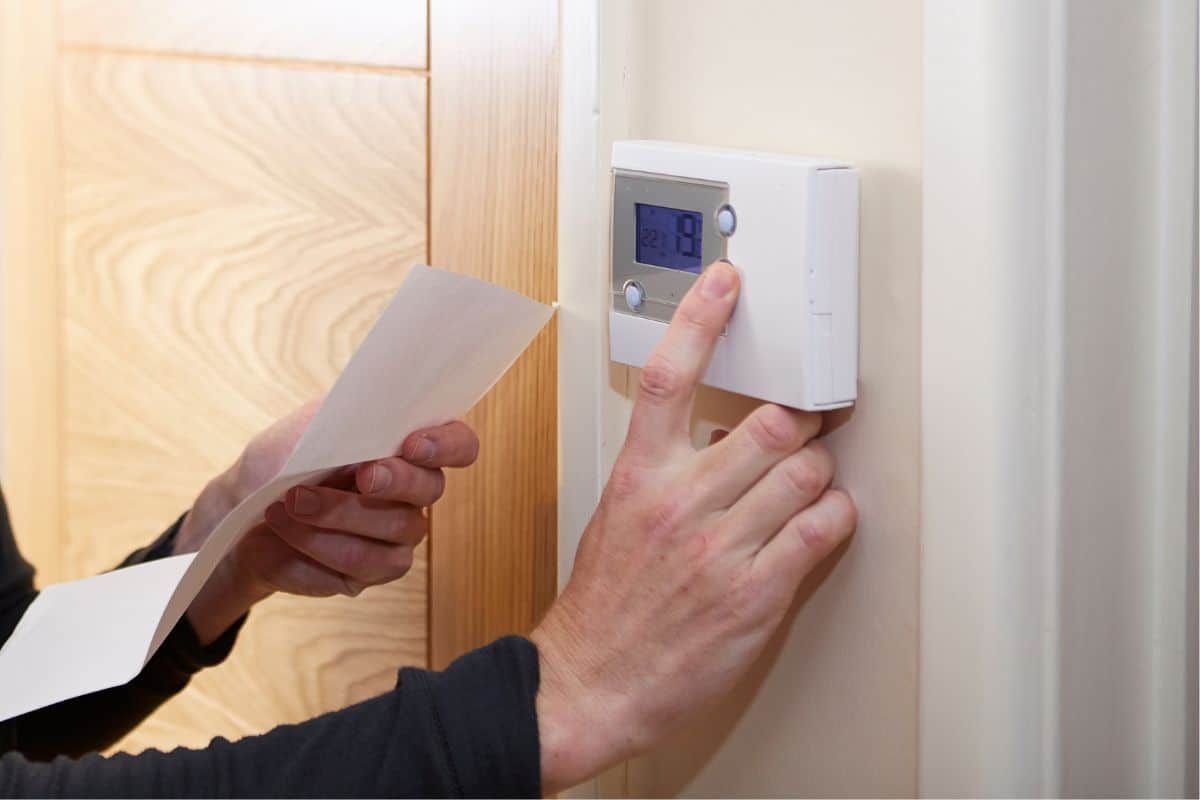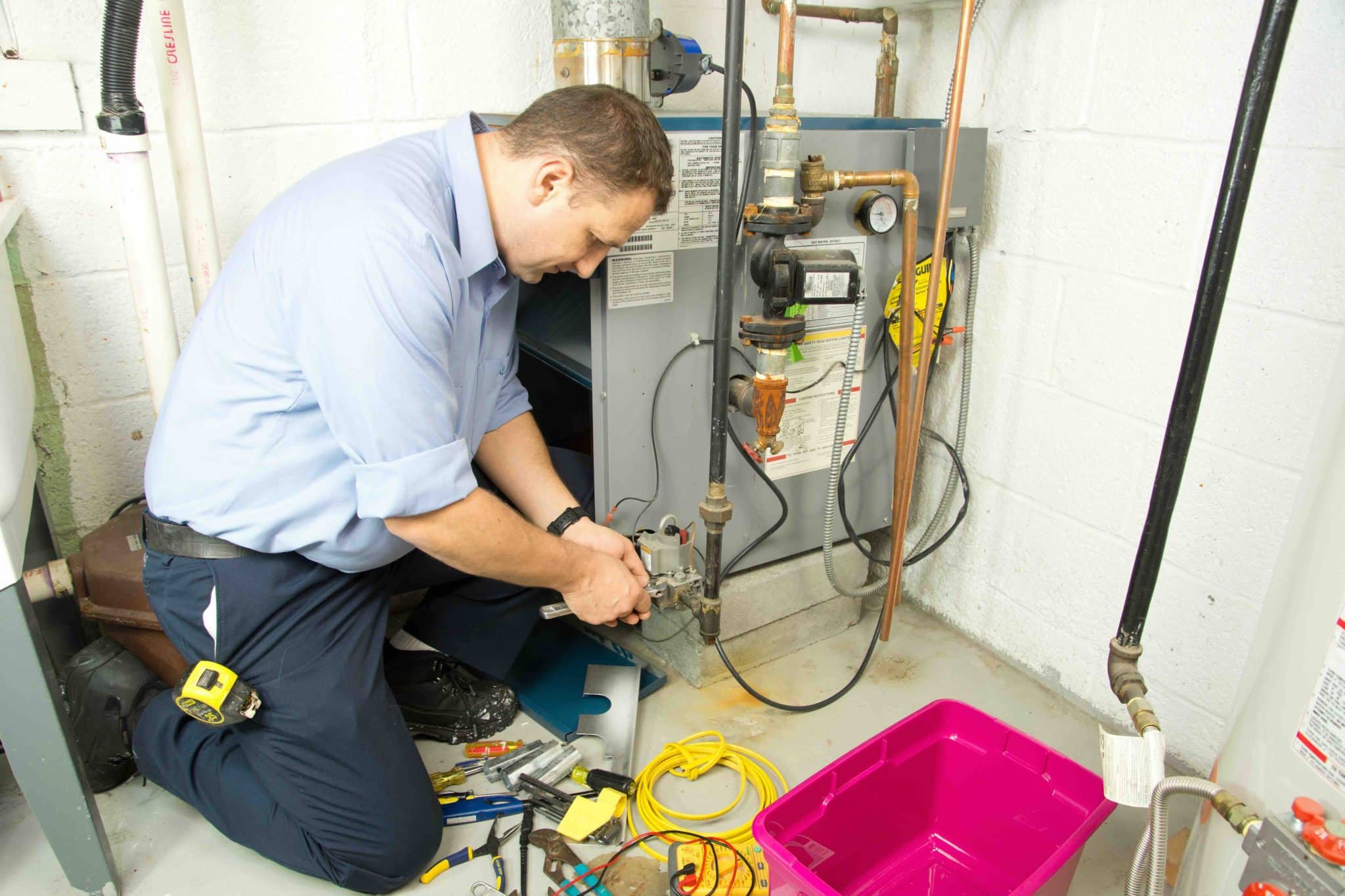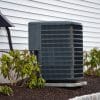
As winter’s cold embrace sets in, a malfunctioning furnace can quickly turn into a household emergency. So, what to do when the furnace goes out in winter? In this article, we’ll discover timely solutions, tips for navigating the challenges of a winter furnace outage, and when you need to call a professional for a furnace repair.
Get ready to address your furnace issue and ensure your home stays warm and inviting during the chilly season.
If you’re experiencing an HVAC emergency, we’re here to help. 24 hours a day, seven days a week. Contact our HVAC professionals now.
What may cause your furnace to stop working during winter?
Here are the seven most popular reasons your furnace might stop working during the colder months:
1. Thermostat Issues
Your thermostat is the command center for your heating system. Your furnace won’t know when to turn on if it’s not working properly. Check to ensure it’s set to “heat” and the temperature is set high enough to trigger the furnace.
See also: HVAC not working after changing thermostat
2. Dirty Filters
A clogged air filter restricts airflow, causing your furnace to work harder and potentially overheat.
Regularly replacing or cleaning the air filters can prevent this issue.
3. Pilot Light or Ignition Problems
For gas furnaces, the pilot light or ignition system is crucial. If these components fail, your furnace won’t be able to produce heat.
4. Mechanical Wear and Tear
Just like any machine, your furnace can suffer from wear and tear. Parts can become worn out or malfunction over time, affecting the furnace’s efficiency and functionality.
5. Electrical Issues
Problems with the electrical connections or power supply can prevent your furnace from operating. This could include blown fuses, tripped circuit breakers, or other electrical system failures.
6. Blocked Vents or Ducts
Proper airflow is critical for the efficient operation of your furnace, especially during the winter months.
Factors such as blocked or closed vents, and even the potential issue of a frozen furnace exhaust, can significantly impact your heating system’s performance.
7. Fuel Supply Problems
For those with gas or propane furnaces, issues with the fuel supply can be a common culprit. This could be due to a closed valve, a problem with the delivery system, or empty fuel tanks.
What to check for when it happens?
When your furnace stops working during the winter, it’s important to stay calm and perform some basic checks before calling a professional.
First, check your thermostat to ensure it is set correctly to ‘heat’ and the temperature is higher than the room’s temperature. Also, check if the circuit breaker has tripped or if the furnace switch is turned off.
Here’s a more comprehensive checklist to guide you through the initial troubleshooting:
1. Check Your Thermostat
- Settings: Ensure it’s set to “heat” and the temperature is set higher than the current room temperature.
- Batteries: Replace the batteries if it’s battery-operated and haven’t been changed in a while.
- Program: Verify if the thermostat is programmed correctly, as incorrect settings can prevent the furnace from turning on.
2. Inspect Air Filters
- Cleanliness: Check if the air filters are dirty. A clogged filter can restrict airflow and affect the furnace’s efficiency.
- Replacement: If the filter is dirty, replace it or clean it if it’s a reusable type.
3. Examine the Circuit Breaker and Power Supply
- Circuit Breaker: Ensure that the furnace’s circuit breaker hasn’t tripped. If it has, reset it.
- Power Switch: Check the furnace’s power switch, usually located on or near the furnace, to see if it’s turned on.
4. Look at the Pilot Light (For Gas Furnaces)
Pilot Light Status: If your furnace has a pilot light, check if it’s lit. If not, contact a professional to inspect and have it relighted.
5. Assess Vents and Registers
- Obstructions: Make sure all vents and registers in your home are open and unobstructed by furniture or rugs.
- Airflow: Feel for airflow at the vents. No airflow could indicate a blockage or an issue with the blower.
6. Fuel Supply Check (For Gas or Oil Furnaces)
- Gas Valve: Ensure the gas valve to the furnace is open.
- Fuel Levels: If you use propane, check the fuel levels to ensure there’s enough supply.
7. Emergency Switch and Furnace Door
- Emergency Switch: This switch, often resembles a light switch near the furnace or at the top of the basement stairs, should be in the ‘on’ position.
- Furnace Door: Ensure the furnace door is properly closed. Some furnaces have a safety switch that prevents operation if the door is open.
When to Call a Professional
If these simple checks don’t resolve the issue, or if you’re uncomfortable performing any of these steps, it’s best to call a professional HVAC technician. They can diagnose and repair more complex issues safely and efficiently. Regular maintenance by a professional can also help prevent future breakdowns.
How to prepare your furnace and HVAC system for cold winter?
1. Replace or Clean Air Filters
Ensuring your air filters are clean is essential for the efficient operation of your furnace. Ideally, you should replace or clean them every 1-3 months. A clean filter not only improves air quality but also enhances airflow, reducing the strain on your furnace.
2. Thermostat Check and Testing
It’s important to check and test your thermostat to ensure it’s functioning properly. You can turn on the heat and observe if the furnace starts and reaches the set temperature. You should also change your thermostat batteries regularly to ensure proper operation.
3. Schedule Professional Maintenance
Although not a DIY task, scheduling professional maintenance is a key step. An annual inspection and servicing by a qualified HVAC technician can prevent potential issues from escalating and ensure your system is running efficiently.
4. Clean Vents and Registers
Cleaning all vents and registers in your home is a simple yet effective task. Removing dust and debris ensures unobstructed airflow and can significantly improve the efficiency and effectiveness of your heating system.
5. Test Carbon Monoxide Detectors
With increased furnace use, it’s vital to ensure your carbon monoxide detectors are working properly. This is a simple check that involves pressing the test button on the detectors to confirm they are operational.
This step is crucial for your safety, as furnaces can be a source of carbon monoxide leaks. Also, it’s recommended to check the expiry date for replacement if needed.
6. Prevent your furnace exhaust from freezing
To prevent furnace exhaust from freezing in winter, clear snow around the vent, manage condensation, and consult a professional to schedule annual maintenance for optimal heating system performance and safety in cold weather.
FAQ
How can I tell if my air filter needs to be changed?
Inspect the air filter for any visible dirt, dust, or clogging. If it looks dirty or hasn’t been changed in the past 1-3 months, it’s time to replace or clean it.
Should I try to relight the pilot light by myself?
We strongly recommend not to try relighting the pilot light on your own. Instead, contact an HVAC professional to handle this task.
What maintenance can I perform at home to prevent furnace problems?
Regularly change or clean air filters, keep vents and registers clear of obstructions, and ensure your thermostat is functioning properly. Also, schedule annual professional maintenance.
Conclusion
In conclusion, a winter furnace outage demands quick action. We hope this guide has equipped you with essential information—prioritizing safety, seeking professional emergency furnace repair service if necessary, and implementing preventive measures.




